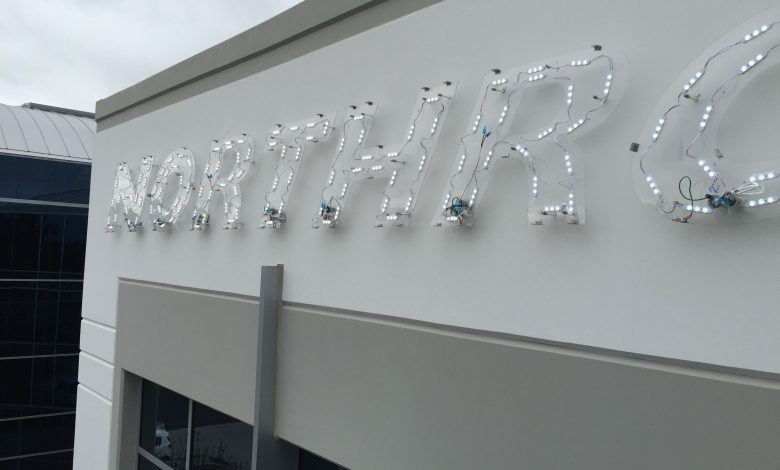LED Insights: The Future of White LEDs
What was once the holy grail of LED technology is now reliable and affordable.
LED lighting has been around since the 1960s; however, it was not until the development of the white LED about 20 years ago that LED technology set itself on a path to be the dominant lighting solution of the 21st Century. LEDs are monochromatic in and of themselves. Most white LED technology today is based upon partial conversion of blue LED chips to white light using a phosphor. Early uses of LEDs included signage, which could still use the limited output of early LEDs. Much of the LED development over the past decade has been around efficiency improvements.
Most LEDs used for signage are in the low to mid power range and efficiencies of the LEDs themselves have improved from less than 100 LM/W to 150 to 200 LM/W over the past 10 years. This means that you can pull one of two levers when utilizing higher efficiency LEDs. You can make the LED modules brighter at the same power or keep the brightness the same and run more footage. In signage, the name of the game is distributed light, so adding more power at some point becomes self-defeating and the sign can be too bright. Therefore, most LED module manufacturers are opting for added run footage. This is important, as the power supply is the highest risk of failure in the system. Increasing run footage, reduces power supplies, thus failure points.
Technically speaking, most of the performance improvements in LEDs are from a series of breakthroughs in device structure, phosphor technology and crystal growth. One of the classic problems with LEDs is inefficiency due to trapped light in these high refractive index semiconductor materials. Recent advances in light extraction include different die shapes, patterning of the surface, and use of mirrors and new optical coatings. The other advance really revolves around price and quality. On the quality side, the general illumination market has driven up chip sizes. This has had a benefit to the sign industry because these larger chips that are being put into mid-power LEDs can handle much higher drive currents.
For example, in Principal LED‘s Qwik Mod Series the LEDs are operated at 55% of their rated current. This eliminates the need for constant current regulation to ensure that LEDs are not overdriven.
On the price side, mid-power LEDs like those used in channel letter modules can be purchased from high-quality manufacturers for a few pennies. The LED itself represents as little as 10% of the overall cost to build a sign module and additional “output” really shouldn’t cost much more. What this means for our industry is that LEDs are truly a commodity. Although there may be some downward pressure on pricing, most LED modules are close to the bottom of the price point. In fact, I would strongly argue against further price erosion.
For example, a typical set of channel letters may have less than $25 of product inside. Considering the LED is the most important portion of the illuminated sign, I wouldn’t recommend skimping there to save $10.
So, what does the next decade hold for LED signage? Since the LEDs themselves will offer only marginal improvement above the current 200 LM/W standard and since prices are near the bottom, I believe most innovations will be around lowering the total system cost to the sign maker. This may include creative designs that reduce the number of power sources or solutions that reduce installation and labor time. The other area of improvements will likely be at the systems integration area. So-called “Smart” LED lamps currently exist that can be tied to any Wi-Fi network. Level of control varies from dimming to changing the color temperature of the white LED, to the actual spatial beam pattern.
I fully expect this type of technology to be applied to the sign industry in the next decade and will open up options for the end user to actually control and interact with their illuminated signage. Once a sign is networked, it can do very “smart” things like turning on when there is a thunderstorm during the day or dimming at 3 a.m. to reduce energy costs. At a minimum, given the current state of white LED development, we can expect prices to stay low and performance of the LEDs to remain very high.





